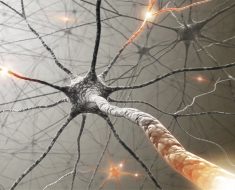An increasing number of individuals survive the coma that follows severe brain injury and open their eyes. However, it is extremely difficult to determine their level of consciousness. Prof Steven Laureys, neurologist and head of the Coma Science Group at Liège University Hospital, emphasised the following point while speaking at the 4th Congress of the European Academy of Neurology (EAN) in Lisbon: “Assessing disorders of consciousness after a brain injury correctly is a huge challenge for neurologists. Our decisions are often a matter of life and death, so it is essential that they be scientifically reliable.”
Quick assessment with the SECONDs scale
Disorders of consciousness due to brain injuries are highly complex syndromes. A reliable behavioural assessment depends on a measurement method that must be repeatable and standardised. The Glasgow Coma Scale has become established for coma patients but does not reflect all states of consciousness. Prof Laureys: “We need simple scales that are applicable to every assessed patient and that can help with treatment decisions.”
The Coma Recovery Scale-Revised (CRS-R) is currently the gold standard neurobehavioural tool to assess a patient’s state of consciousness, i.e. whether he or she presents an unresponsive wakefulness syndrome (formerly known as vegetative state) or is in a minimally conscious state. This comprehensive series of tests determines, among other things, whether patients can respond to prompts or pain stimuli, can display attentiveness, a startle reflex or can produce verbalisations. Prof Laureys: “This assessment process takes a great deal of time, however, and cannot always be carried out. We therefore developed the SECONDs scale and tested it in a study involving patients with severe brain injuries. It concentrates on the five most frequent criteria with which it is possible to determine with 99 percent accuracy whether a patient is conscious.” The SECONDs scale is a useful instrument especially when time is limited.
Conscious states fluctuate – multiple examinations are needed
It is likewise important to assess patients multiple times because their state of consciousness may fluctuate. Prof Laureys: “As part of a study, we examined patients with severe brain injuries four times a day applying the CRS scores. It turned out that their conscious state can vary greatly over the course of the day. This finding supports the recommendation to test patients multiple times within a short time period to establish a reliable diagnosis.” Future studies with a larger number of patients should focus on better characterising these fluctuations.
High-tech examination of conscious states
With the MRI, nearly all large European hospitals have a very good, albeit expensive, high-tech instrument available to them for examining conscious states. The imaging diagnosis procedure is also being constantly refined. Prof Laureys: “We were able to show in a study that diffusion tensor imaging helps to eliminate uncertainties in the diagnosis of conscious states.” Diffusion tensor imaging is an imaging method that uses MRI to record the motion and also directional dependence of the diffusion of water molecules in bodily tissue or in the brain and depicts them in a spatially resolved manner. Prof Laureys: “We face the challenge, however, of having the high-tech methods and the new scientific findings become part of clinical practice everywhere in Europe.”
tDCS can improve a state of consciousness
Prof Laureys is convinced that patients suffering from disorders of consciousness due to injuries or neurological diseases will benefit from new therapeutic options in the future. For instance, a new treatment method has proved promising in a controlled clinical study. Steven Laureys: “Transcranial direct current stimulation is an important non-invasive instrument for all of neurology and neuropsychiatry.” The expert went on to elaborate: “We showed that a twenty-minute treatment with tDCS applied over the prefrontal cortex can transiently improve the level of consciousness in patients with brain injuries. More interestingly, repeating the stimulation for 5 days induces longer behavioral changes, lasting up to a week after the end of the treatment. But we must not stir up false hope in the patients’ families that tDCS is a new miracle cure. On the other hand, it is also a historical error to believe that nothing can be done for these patients.”
More research needed
Source: Read Full Article





